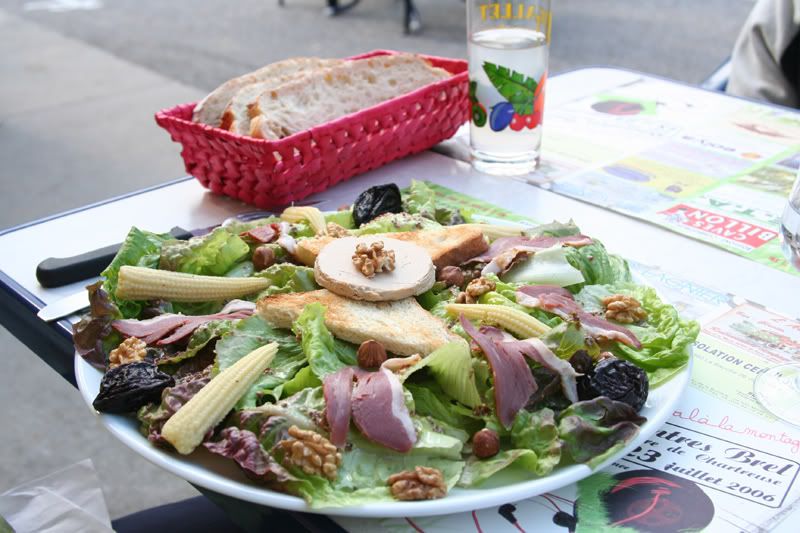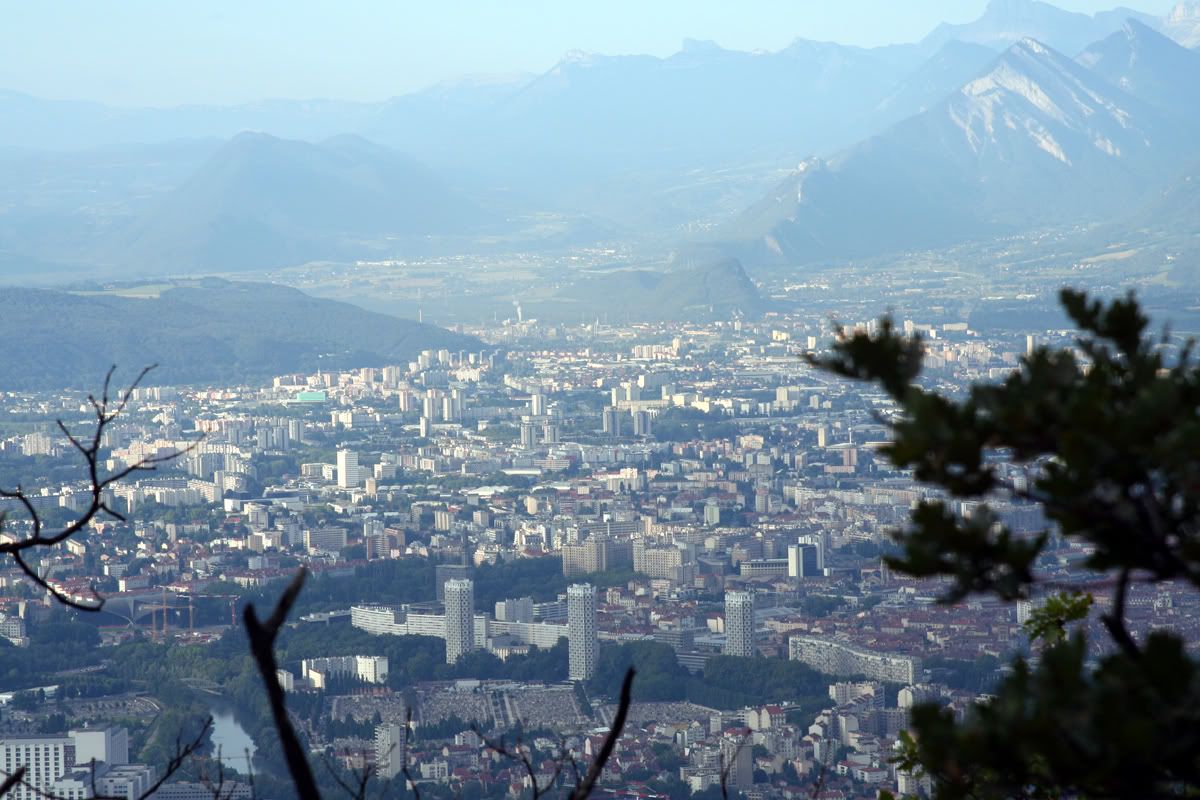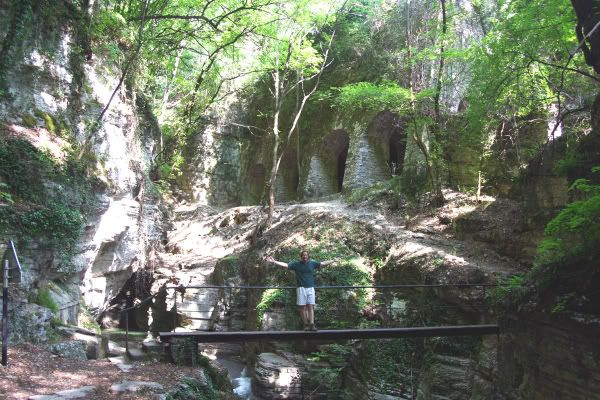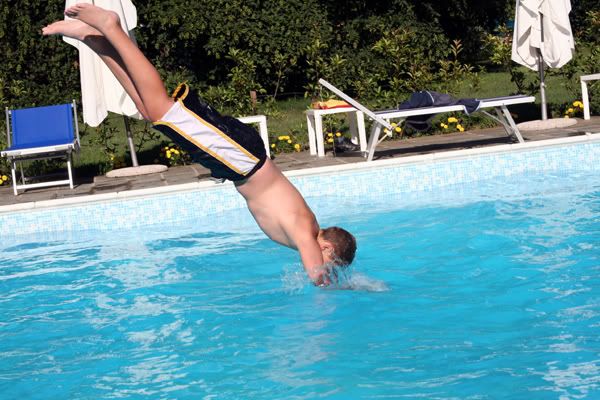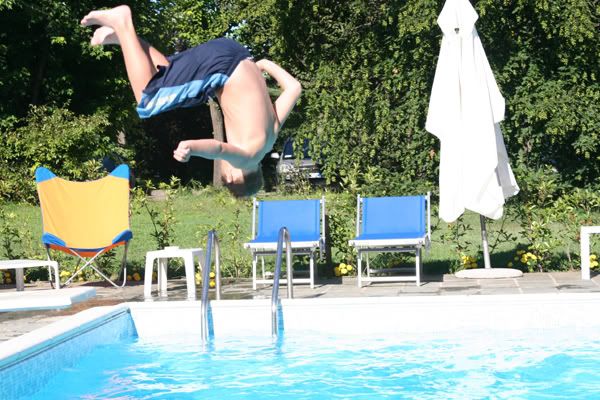We all are very sad to be leaving. We have had a wonderful time here. Much different than our trip to Paris last year, and in some ways better. In particular, Suzie and I both feel that we got a much better idea of what life in France is like this year. We had a number of occasions (the last being our weekend in Lyon, described below) where we spent extended periods of time interacting in French with regular people here, which was not the case in Paris. It also helped that none of the TV channels we receive here are in English, so the boys could not constantly watch American shows. As I mentioned in a previous post, both Suzie and I notice that our French has improved immensely; situations that just to be difficult for us now seem very easy.
Our last weekend here was very special. Suzie’s sister Yvette has a very close friend named Florence who is French. Before we left, Florence gave us the name of a couple who grew up in her small hometown, whom she referred to as her “second family,” and arranged for us to meet. Suzie called last week, and they invited us to come to stay with them. So on Saturday we drove from Le Sappey to Bellgarde, which is located northwest of St. Etienne, close to Lyon, to visit Irene and Bernard and their two children, Morgane and Martin.
It would be hard to describe how hospitable they were to us, or how very delicious the food was that they prepared for us. They work in Lyon, but have a vacation house in Bellgarde, in a farming area in the Loire valley. Their next door neighbor raises chickens, and the house is surrounded by pastures and fields of corn. On Saturday we were first treated to Pate, a light pastry filled with fresh fruit, which apparently is one of Florence’s favorites, the presentation of which was celebrated with a photo:

Afterwards, we went to visit an eleventh century fort in the nearby town of Montrand-les-Bains. It was unfortunately closed, but we were able to walk around the grounds and have splendid views from the outside.

We then went to an ecological preserve in the Loire floodplain. My Water Agency friends will appreciate this – it was located on an old gravel mining site that various environmental groups had purchased and turned into a protected area. It was very beautiful, with many birds, and a very nice interpretive center.
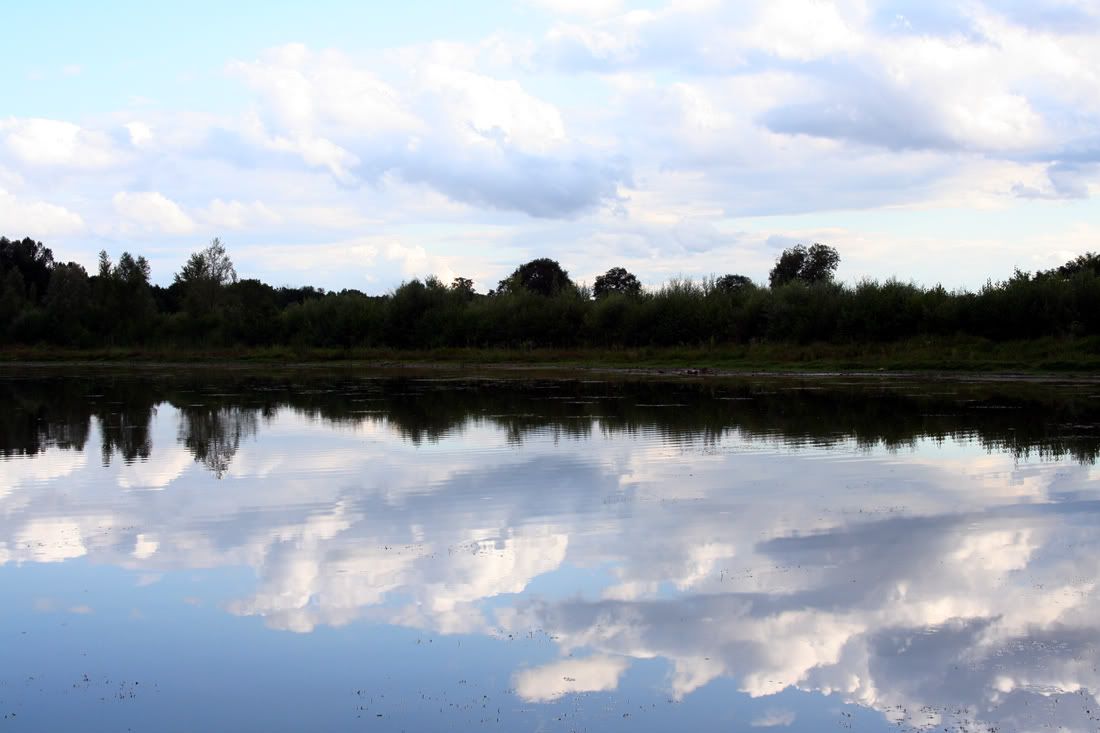
The most interesting experience happened while we walked around the lakes. Bernard seemed to be a fairly avid outdoorsman, and he had brought with him in the car a small wire basket for … holding snails. Escargot being a traditional French dish, he would go and collect snails for eating. So we all participated in a snail hunt, which, from the snails’ point of view, was a bit of a mismatch, I’m afraid.
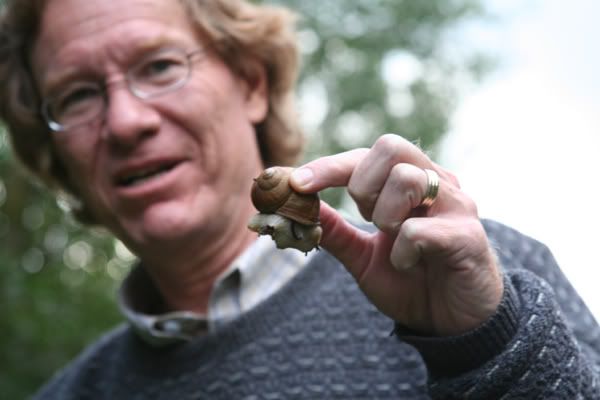


After hunting snails, Bernard and Irene treated us to escargot that evening. I’m not sure I remember all of the steps you have to go through, but I think the process is this – after catching the snails, you have to leave them alone in a cool place for two weeks, to cleanse their interiors. Then (I think), you have to put them in salt water so that they swell up and pop out of their shells. Then (I think), you boil them in hot water, after which time you can freeze them for eating later.
Bernard already had a batch of snails frozen, and he had taken them out to defrost in the afternoon. He then mixed up, by hand,butter, garlic, parsley, and maybe other ingredients. To bake the snails, you put snails in the bottom of little ceramic snail-cups and then fill the rest of the cups with the butter/garlic concoction.


The snails in their butter and garlic sauce are so rich that you would not think you could eat many of them, but between the eight of us we polished off 138 snails ... which we ate with yet another entrée (first course) of hot sausages and saussison, followed by a dinner of beef and pasta, and cheese for dessert! All of it absolutely incredibly delicious.

That night, I slept as well as I had on the whole trip.
But in the morning, more eating lay ahead. First, a breakfast of fresh fruit, various cheeses, a delicious pastry made with fresh cherries, homemade bread, homemade confiture (preserves), including an incredible apricot and cassis preserve, pate, and coffee. All of it simply wonderful, yet not too heavy (the fruit was all prepared without much sugar, making it very light).

After breakfast, Irene and Bernard were so kind as to drive with us to Lyon, to show us around the city. I had heard that Lyon was not nice, but to me it seemed to be much nicer than Grenoble, and much larger and more bustling. We toured several beautiful cathedrals, walked along and over the Soane River, and then had a huge, delicious late lunch (including a Lyonnaise dish consisting of a type of baked pasta in a lobster cream sauce, unique and wonderful, and the best, most decadent, thick, moist, chocolate cake I’ve ever had) at a restaurant in the old section of Lyon. We walked around a little more (to avoid falling asleep in the car) and then said our goodbyes.

More Lyon pictures here, here, here, and here.
In the short time we were with them, we ended up feeling very comfortable with Irene and Bernard and their kids. (I should add that my son, Will, was somewhat taken with their daughter, who is the same age, who is cute, bright, confident, and utterly without guile).

We feel very fortunate to have met Bernard, Irene, Morgane and Martin, and to have been able to share a few days with them. Thank you, Florence, for giving us that opportunity.
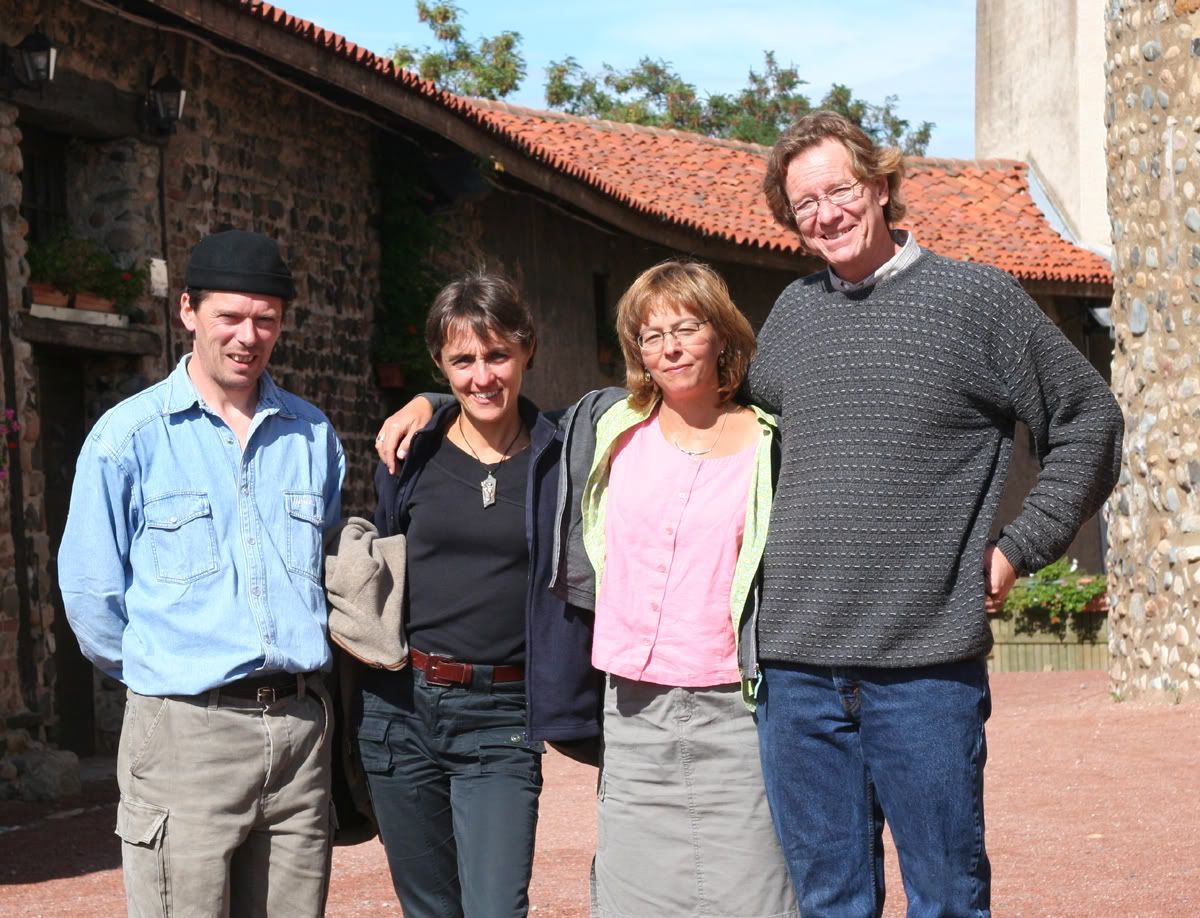

Everyone wish us luck tomorrow traveling home. We hope to see you all soon.
